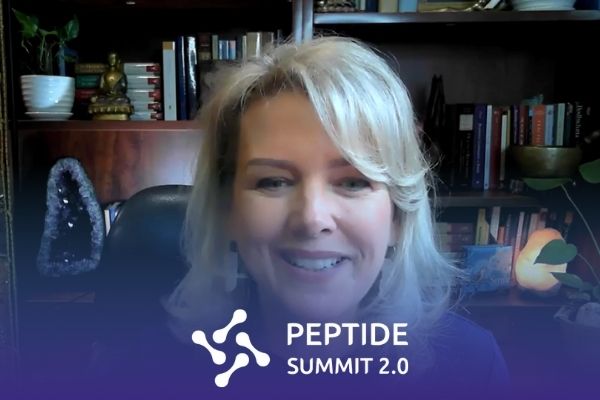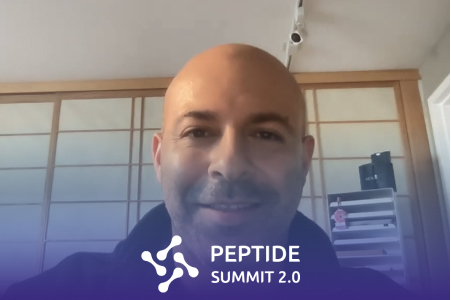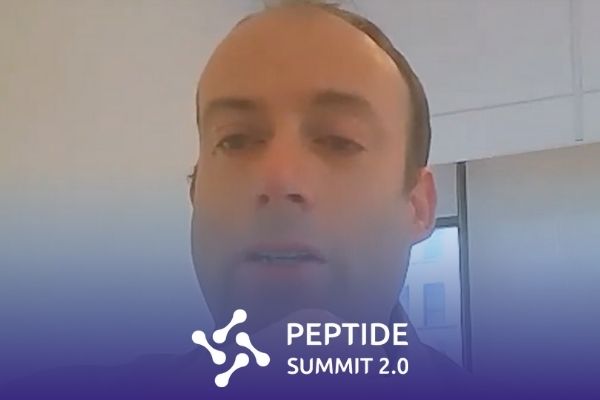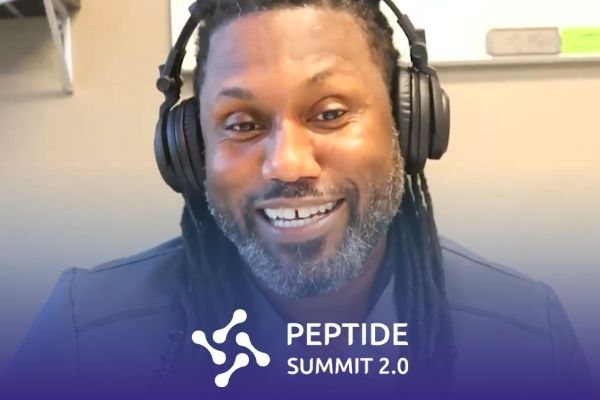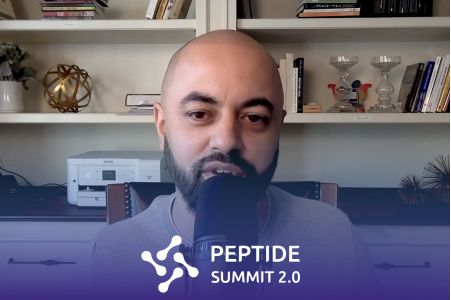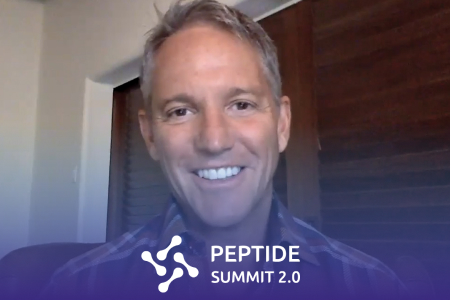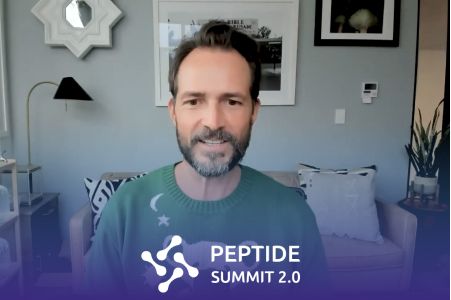Join the discussion below

Dr. Cook is President and Founder of BioReset® Medical and Medical Advisor of the BioReset® Network. He is a board-certified anesthesiologist with over 20 years of experience in practicing medicine, focusing the last 14 years on functional and regenerative medicine. He graduated from the University of Washington School of Medicine... Read More
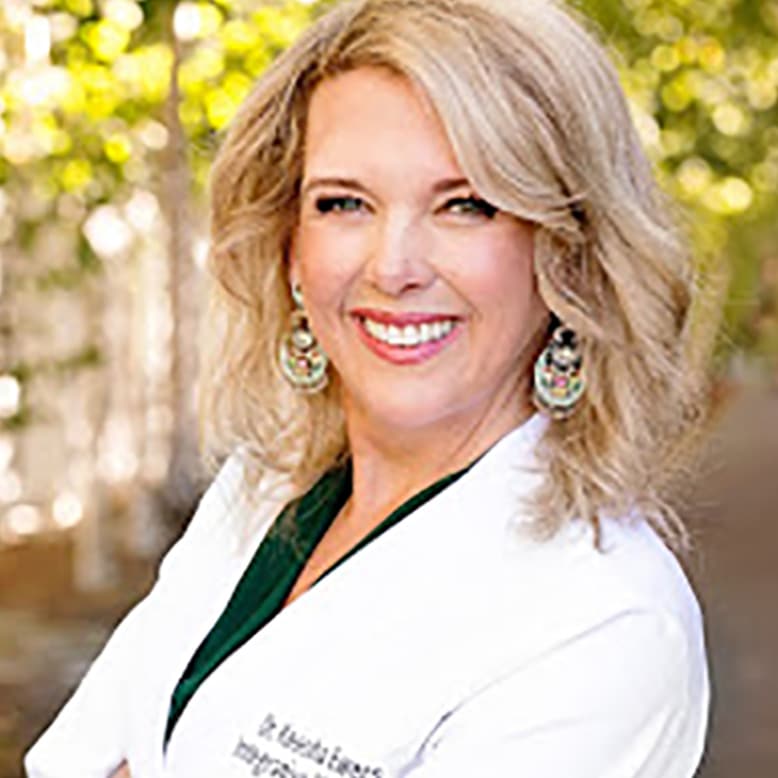
Keesha Ewers, PhD, ARNP-FNP-C, AAP, IFM-C
Dr. Keesha Ewers is an integrative medicine expert, Doctor of Sexology, Family Practice ARNP, Psychotherapist, herbalist, is board certified in functional medicine and Ayurvedic medicine, and is the founder and medical director of the Academy for Integrative Medicine Health Coach Certification Program. Dr. Keesha has been in the medical field... Read More
- Does eveyone have trauma?
- What is the first step we can take to heal past childhood trauma?
- Is it possible to heal from these brain and hormone changes and live into our highest potential physical, mentally, emotionally and spiritually?
- Trauma changes your brain architecture, can that be reversed?
Matthew Cook, M.D.
Hi, my name is Matthew Cook, M.D. and welcome to the Peptide Summit. Today we have the home edition, and I’m with Dr. Keesha Ewers, and she’s an integrative medicine expert, doctor of psychology, family practice, A R N P, and a psychotherapist. And today I’m excited to bring her on the show, cause we’re gonna talk about trauma, which is a topic that’s near and dear to my heart. It’s something a lot of people face and so I’m delighted to kinda have you here. And this is a peptide summit, but I would say one of the biggest things that people face in this world and particularly now, is trauma. And so diving into kind of some of the biology of that and how it affects people and how to think about that I think is important. And then that that’s gonna be a launching point for a conversation on some strategies that we use and we can talk about peptides as well. So welcome to the show.
Keesha Ewers PhD, MSN, ARNP, FNP-C
Thank you. It’s so great to be here.
Matthew Cook, M.D.
So tell me a little bit about your background and how you put together trauma. I’m super excited to hear about that.
Keesha Ewers PhD, MSN, ARNP, FNP-C
Yeah, so I spent the first part of my medical career as an RN in the ICU. So from age 19 to 30, I was a high intensity, high adrenaline junkie, sky diver, raising four small children. You know, I really loved that, that high intensity part of the hospital. And then I was diagnosed with rheumatoid arthritis and much like my patients who come to me with autoimmunity will say where, where they say “all of a sudden” I was sick, you know, which we know is not true. Nothing of this stuff happens overnight, but it, it was experienced that way for me too. One day I’m training for a marathon, and the next day I wake up from my night’s sleep with 10 pounds of extra puffiness all over my body, my joints are red and inflamed. I, you know, someone had taken the batteries out of the Energizer Bunny. And so I went in and I was seen and in the course of the history, she asked me, “Do you have a family history of autoimmunity?” And I said, “Yeah, I think my grandfather had rheumatoid arthritis.” I never knew him. He died actually at the age I am now, which is 57, and he was wheelchair bound for a bit of that. And she said, “Well, that’s what you’ve got. And here are two prescriptions: one’s for a nonsteroidal anti-inflammatory drug, one for methotrexate, come back when you’re worse, not if.” And I just remember going, “Wait, wait, wait, wait.” You know, “I’m super disciplined. I make my own food. Is there anything else?” And she said, “No, you happened to draw the short straw, in the genetic lottery here.” And, you know, that was kind of like close the book, put it on the shelf, end of discussion.
And so I remember on my way home thinking, my paradigm of medicine says this, maybe there’s another way of seeing things that I’ve never been exposed to, and I should probably go look. And, sure enough, like I always tell people, I wouldn’t have known an herb if it would’ve bitten me. I just didn’t know anything about what we traditionally call alternative medicine, or complementary, alternative medicine. And so I dove into PubMed and looked at the research and I found a couple of compelling papers on yoga and autoimmunity. And so the next day I was in my first yoga class, and in the course of holding one of those postures, as the yoga teacher was walking through the studio, he said enough about this word Ayurvedic medicine, which was the sister science of yoga, 10,000 years ago in India. And it was enough that it intrigued me that I went home and I looked that up and you remember this? Oh, and, Hmm. So I went, I looked it up and one of the things that was so interesting about Ayurvedic medicine to me is 10,000 years ago, they said, we’re not all the same. And in fact, we have these different constitutional types and autoimmune disease is undigested anger. And I-
Matthew Cook, M.D.
Oh really?
Keesha Ewers PhD, MSN, ARNP, FNP-C
Remember, sitting back in my chair and going, “But I’m not an angry person,” you know? And, and then thinking, “Oh maybe, the fact that I identify like that, and reject this emotional experience of humans that maybe that’s something?” And so I started learning, I was learning how to meditate. And I was becoming a yoga teacher in this whole process. And one day in my meditation, this word autoimmune kept floating in front of my awareness. And, and I thought, I started looking at it and I thought, auto means I’m doing this to myself. You know, I wonder, like when did I first wanna die? Because that’s kind of what I’m doing is autoimmune means my immune system’s attacking myself. That’s my defense system, and it’s turned on me. So when, when did that start and why? And that was a really important question to ask, not how do I quickly get out of pain and suffering, but what, what triggered this? How, why is this happening? And so I followed what I think of as like the, this little golden breadcrumb trail of memories backwards to find out, is there a time when I wanted to die? And I came on this little 10 year old girl version of myself who was being sexually abused by the vice principal of the elementary school that I was attending. And I remember looking at her in my mind’s eye thinking, oh, she wanted off the planet. She wanted to die. My dad was in the Navy. He was out to sea, this was happening. I didn’t have apparently the right words to convey it to the people around me. I, you know, it was 1970s and I’d been a Navy brat for my whole childhood and lived a lot of it in Japan with no television.
And I don’t even think I knew what the word sex was at that age, or even abuse, or molestation, or any of those things. And so I was telling my mom, I didn’t wanna go to school cause it was scary and, you know, things like that. And so, you know, I thought, okay, this has to have something to do with what’s going on right now today, 20 years later, I bet this is connected. And it turns out science tells us that indeed, that is true. And so a lot of people, you know, I teach for the Institute for Functional Medicine and, and I’ll, I’ll be on, on the stage talking about adrenals and hormones and the connection to the immune system and trauma and say, “We’re not asking our patients the right questions.” You know, when we give them protocols, whether it’s homeopathy, or it’s dietary, or it’s supplements, or peptides, whatever it is that we’re doing, we’re, we’re addressing, you know, their ICD 10 code, a diagnostic code. But what are we really looking at? What triggered their nervous system responses that tore apart their gut, disregulated their immune system, shortened their telomeres, you know, like all the things that we’re trying to repair, have we gotten down to the actual root of it? And we also knows statistically that one in four children, you know, is assaulted a year and that’s reported. And so we know it’s much more than that, right? So this is, this became something that I went, “Oh, I know these things are connected.” And I started going into some pretty deep trauma work. And within six months my RA was gone, you know, without taking meds, without, I did change my diet, cause I was also studying some other things like how to match what all my lifestyle choices were to this particular system, you know?
Matthew Cook, M.D.
What, what diet change did you do?
Keesha Ewers PhD, MSN, ARNP, FNP-C
Well I had already gone gluten free, and it turned out in my genetics I’m very gluten intolerant and I’d cut out sugar, but I hadn’t gotten all the way better. I was about 80% there. And so when I started really doing this work with trauma, it completed the process.
Matthew Cook, M.D.
So that’s a good one. I had a woman I love, who’s the mother of one of my friends and they came to visit me. And then her husband, who’s my friend’s dad, said, “Oh, I’m gonna give you guys sourdough bread cause sourdough doesn’t have any gluten cause the gluten’s all digested.” And so then, we kinda had a dinner and so then they ate all of this bread and then next day she woke up and her hand was swollen. And she has rheumatoid arthritis, and it was such a great overwhelming display of-
Keesha Ewers PhD, MSN, ARNP, FNP-C
Right.
Matthew Cook, M.D.
what a role food can play. But I echo, we, I studied Ayurveda myself, and I echo what you say, that a lot of times there’s this trauma. And a lot of times it’s so hard to be able to even begin to speak about it. And then just starting a conversation often can be profoundly helpful. And so it’s interesting that, that incident, did that send you in the direction of becoming a therapist then?
Keesha Ewers PhD, MSN, ARNP, FNP-C
It did. Well, actually it’s interesting cause it sent me in the direction of then getting a master’s degree in Ayurvedic medicine, going back to school and getting my A R N P, getting board certified in functional medicine, and then I opened a private practice and I just remember the person that came and sat down across my desk for me that had anxiety. I, this, this man that was very , you know, like all the things that I, you would identify, but he had the such anxiety, but he was there to see me for GERD, gastroesophageal reflux disease. And of course the, the American Medical Association gold standard for that is going to be a proton pump inhibitor, right? That you could tell that he was such an anxious person. I ask him, is he, you know, was he in therapy? Did he, was he addressing his anxiety? And he said, “Well,” I mean, he was in talk therapy. And I said, “Is it helping?” And you know, I remember as I’m writing, I’m pulling out my prescription pad and going, “I don’t, this isn’t, no, no.” And so I put it back in the drawer and I said, “Look, there’s something that the gold standard in medicine would tell me to do, is evidence-based, like this is what I’m supposed to do for you.” But I said, “I can tell what’s going on that’s causing this by your conversation as we’ve been talking.” And what do you, we went through sort of this initial trauma that had created this anxiety. And I realized, you know, I said, “So take this back to your therapist and work with this.” But I remember thinking I can’t do this job without really understanding the psychological component. And so I went back to school, I always say, like, whenever someone comes in the office and stumps the chump, the chump goes back to school. Because in that experience, as I would try and communicate with his therapist, she was very unresponsive and not open to really dealing at a trauma level, but more at a talk level. And I started realizing that all therapy is not the same. And I didn’t know that back then either, that there were these, there was so much to it. And so I, yeah, I went back to school again.
Matthew Cook, M.D.
So that’s interest, you know, my father is a, a shout out to my father. My, my father is a therapist, he’s a psychologist. And so then I spent my whole life basically every day was psychology conversation, you know what I mean? And getting IQ tests and stuff like that when I was a kid. And so then, my rebellion was to try to pick the field that was farthest from psychology, which was anesthesiology. And so, and then I literally put all my patients to sleep and then didn’t talk to them. And then the great irony is that I basically tell people now that fundamentally I’m a psychologist, with a needle.
Keesha Ewers PhD, MSN, ARNP, FNP-C
Yes.
Matthew Cook, M.D.
But, but you know, and.
Keesha Ewers PhD, MSN, ARNP, FNP-C
When I was looking at grad school I was a shoo-in after all those years in the ICU, to be a CN RNA, a certified nurse, and a-
Matthew Cook, M.D.
Oh yeah.
Keesha Ewers PhD, MSN, ARNP, FNP-C
Right? And so, and I would’ve gotten into school so easily, the income would’ve been great. And so that was one of my things that I was looking at. And as I shadowed an anesthesiologist for four hours, I was done. I thought, you know what? I don’t wanna just put people to sleep. I wanna talk to them and teach them and help them gain empowerment over whatever’s going on for them. But yeah, there’s a sadness in that, right? Where you’re just putting ’em to sleep.
Matthew Cook, M.D.
Right. Now then I’ll say a couple things that are interesting is one, when I think about trauma, if there’s one place that, of my life that I have probably seen more trauma than anywhere else is in ICUs, is in a hospital-based setting. You know, I used to spend, a big, good part of my life doing a lot of trauma. And so it’s interesting that that’s visited both upon the practitioners that are there, and the people that come in. And so then, and then within that, within any trauma, trauma happens and then that could be work-related or like you, as a child, sexual trauma. And then superimposed upon that then is all, everything that’s going on physiologically. And so then like in your case, little genetic susceptibility to autoimmune conditions. And so then even in Ayurveda or energy medicine, people would say, “Oh, okay. So maybe there’s like an aspect of anger, maybe that was like in your family?” Yeah I had a, a pastor who was with us for a couple days. And he said the sins of the father are visited upon the son, but maybe you could say the daughter, like from the, the Bible, he was quoting the Bible to me. And so then it’s just so important to me that you’re out here helping to tell this story, such a good one. So did, but-
Keesha Ewers PhD, MSN, ARNP, FNP-C
You bring up a point that’s really important. And that is that it’s not just childhood trauma, it’s adult trauma, too. You know, like your illness, if you’re diagnosed with something that then you’re told there’s, you know, or you go to doctor after doctor, or medical provider after medical provider, and you cannot find an answer or a solution, and you start at feeling like your body’s betraying you, that’s another form of trauma. And so, you know, it doesn’t, we have adult developmental levels too, not just childhood developmental levels. And we can get arrested development in those spaces where we’re traumatized. We don’t move through our wisdom attainment the way that we need to, when we have those arrested developmental spaces. And those of course are the places where I call it the spiritual gymnasium, you know, where God’s just put a weight in our hand and we have to lift and we’re gonna get a strong muscle. Like we don’t, we don’t get wisdom from, from just like coasting. We have to have some resistance training.
Matthew Cook, M.D.
Okay. So then I have a good question for you. I don’t know how to even say this, but, so, for me almost all of the bad is I, how I contextualize trauma for myself is I tell a hero’s journey story about it.
Keesha Ewers PhD, MSN, ARNP, FNP-C
Yeah. Yeah.
Matthew Cook, M.D.
And so then-
Keesha Ewers PhD, MSN, ARNP, FNP-C
So I do too.
Matthew Cook, M.D.
and so then, but then this would be a useful. And so then for me, let’s say that I had some life-threatening thing that scared me, and then I got through it. Then I tell myself a story, “Oh, well, at least you saved them.” And then that is gonna make you better and stronger. When, for people who go through the trauma of sexual abuse, how do you maybe personally, or how do, when you’re working with people, how do you help them do the hero’s journey story?
Keesha Ewers PhD, MSN, ARNP, FNP-C
Yeah. You don’t jump to it. You don’t jump to the part where if anyone’s familiar with Joseph Campbell’s map, you first have this goal, and you can accept it or not. And then you find a mentor, you learn new skills, you go into the cave, and you integrate those skills. You come out, and then life gives you all these really choice challenges to start to practice them. Once you’ve mastered, then you come out resurrected and as an Oracle. And so now you’re a teacher of that level of development to anyone who finds you, that you can then be that person. And then, this is the thing that ticks people off the most, after some time that will get repeated. Like another challenge comes along and then you have to get a new skill, right? And so when we think about the different kinds of trauma, you could think of it as capital T trauma or lower case T trauma, studies show of from FMRI scans that you have the exact same architectural change in your brain to people that fill out perceived stress inventories, and call themselves perpetually overwhelmed, overscheduled, can’t keep up, their brains change in the same way as somebody that has PTSD with a capital T trauma, there’s a shrinkage in the prefrontal cortex, in the front of the brain, your executive function, there’s a growth, especially in the right side of the amygdala, that, Am I okay? Am I safe? You know, your limbic system.
And there can be a disconnect between that child brain and that adult brain. So you don’t jump from the experience of sexual abuse in childhood or rape in adulthood or any of these capital T traumas and there are many of them that are outside of sexual too, you don’t jump from that to forgiveness and having the silver lining immediately appear. There’s a process, and it needs to be a process. So if it happened in childhood, I conducted a study in 2013 called the Healing Unresolved Trauma Study. And out of that came the hurt model. And what I discovered is why the Adverse Childhood Experiences Study, the largest trauma study of its kind that was done between 1995 and 1997 by Kaiser Permanente and the CDC, who showed that with capital T traumas, domestic violence, sexual abuse, neglect, abandonment, loss like having a caregiver or a parent incarcerated, or mentally ill, or addicted to a substance, or divorced, or dead, those are those big capital T traumas that if you’re 18 years older or younger, that you endure them, they’re called an ACEs score. So, you have one of those, you have an ACE score of one, you have two of those, ACE score two, and so on. The higher your ACEs score, what science tells us is the higher your risk for these kinds of chronic illnesses that we see in our society today: autoimmunity, cancer, genetic expression that goes towards disease, et cetera.
So when you think about like, it depends on the level of your trauma, okay, how many of those ACEs that you have, as to the process that you’re going to use to step towards freedom from that trauma, as being a victim to, I mean, I just came up with this, it sounds a little cheesy but to a victor, like, where you really triumph over that and you have wisdom from it and you can look at it and say, “Wow. Had I not gone through that, I wouldn’t have known this or been able to do, be the person I am today.” Many people that go through cancer, come out with that same story. Had I not had cancer, I wouldn’t have known this, this, this, and this about myself, or learned how to do these things. Or, and so you can’t, you can’t go from A to Z in like that. It is a very, I’d like to come back to what we talked about with Ayurvedic medicine saying, you have to digest your memories. You have to digest your emotions. You have to digest your experiences, the same that you do food. That’s so illuminating. And it’s also a huge missing piece in our medical paradigm, the thought that you have to digest these things. And so that digestive process has to be done in a healthy way, slowly, at the pace that you can manage.
Matthew Cook, M.D.
That, I totally agree with that. The, I, you would probably, I would like to talk to you about some of the unusual things that we did. We studied, for actually years, I don’t even think I’ve ever even talked about this on a podcast, but there was some, we studied somatic therapy, and as a way to kind of heal trauma. And so then that would be like, you would hold a muscle maybe in a shortened position and then be talking and kind of working people through a process. And they, they say the body keeps score.
Keesha Ewers PhD, MSN, ARNP, FNP-C
Right.
Matthew Cook, M.D.
And so then that idea also of like an idea that in Chinese medicine and Ayurveda, they both talk about it. It gets, the idea gets digested, and processed, and assimilated, in the intestines. And so then, you’re working your way through that, for us, when we have the big trauma work, often doing things to kind of kind of biology. So like from a peptide perspective, you think C. elegans works on the GABA system, Cmax will increase brain derived neurotrophic factor, but they’ll, they can be fairly calming and then supportive to neurological function. The neurological bioregulators, probably similarly, a lot of people that have trauma with autoimmunity think, and there’s immune peptides that we’ll start to regulate. Sometimes we’ll use ketamine, either ketamine therapy, ketamine psychotherapy.
Keesha Ewers PhD, MSN, ARNP, FNP-C
I use MDMA. I’m an DMA certified-
Matthew Cook, M.D.
Oh, you do?
Keesha Ewers PhD, MSN, ARNP, FNP-C
yes, psychotherapist. And then I also use other, I do deep immersion retreats for trauma with plant medicine. Yeah.
Matthew Cook, M.D.
Okay. So yeah, I read about that. I was gonna, I was gonna ask you about that. So then what, what has been your experience when people use MDMA for trauma? Because I would, I would be supportive of that.
Keesha Ewers PhD, MSN, ARNP, FNP-C
What it does is it downregulates the, that limbic system in the left brain; the one that’s always there saying, does this make sense? Is it logical? Are you, you know, it’s like in internal family systems, you would think of it as your protectors. The protectors that come up and are there, you can actually get them to gently sit still and just be present and witness, and you can allow the other part, like the, the right brain to flourish. We’re a very left brain dominant culture. And so just, and I know like when I’ve sat in the jungle with ayahuasca, the minute it’s kicking in, I can feel my left brain slide like a sliding doorway and I, every single time I always go, “Oh I hope that’s coming back.” You know, like I can, I can feel it leave. And then what’s there is this access to your heart because your brain is not getting in the way with all of its analysis. We can have this analysis by, you know, paralysis by analysis over and over and over again, and retell our story and just get locked into the, the construct of it.
And it just gets rigid in our nervous system. And so when you can soften that and get access to the heart, there’s a whole, in my doctoral work, I used a very interesting forgiveness process as an intervention for women with a history of sexual abuse and low libido. And it was, you don’t jump to forgiveness. That’s why I said that, you know, you’d have to work through this. When you have these nervous system patterns that are set up in childhood if you’ve been a victim of trauma in childhood, well you were not power, you weren’t autonomous, children are not powerful, autonomous beings. They’re they’re little beings trying to figure out how to be in a world governed by big beings. And so, the idea that we go into fight, flight, freeze or faint, children is freeze. And so things get frozen in there. And so some of it is getting that ability to give that child space, some autonomy, like witnessing and giving space so that they can have a voice, that they can take back some power, that you can help them do that. And so there’s that, that has to be witnessed and done before we get to that place where it’s pure heart, and we can use God forgiveness, and we can, we can work with that. But you don’t wanna do spiritual bypassing cause otherwise it just stays in the body.
Matthew Cook, M.D.
What, how would you define spiritual bypassing?
Keesha Ewers PhD, MSN, ARNP, FNP-C
Where you give lip service to, oh, I forgave them. But then-
Matthew Cook, M.D.
Yeah. Yeah.
Keesha Ewers PhD, MSN, ARNP, FNP-C
you still have the activation every time you think about them or, you’re triggered, so forgiveness does not mean reconciliation. That’s something that I’m always differentiating for people. And so there’s a mirror exercise that I use that’s in my book, “Solving the Autoimmune Puzzle.” And it’s very powerful and it’s, it goes through a whole process and you, you really start finding like out that you also were a perpetrator on this planet. Like we’ve hurt people, all of us, right?
Matthew Cook, M.D.
Oh yeah.
Keesha Ewers PhD, MSN, ARNP, FNP-C
And so we start learning how to understand like all the faces of the human experience and not just locking into the one where, oh, we’ve been hurt, you know? So you start working with the, the multifaceted multi-dimensionality of a human life.
Matthew Cook, M.D.
The, good, the, I’d be curious that you, so one way that I sort of put that together is I imagine if, and in a way I almost think about it like my whole childhood, I was a little, getting therapy. I was a childhood psychological study. But then imagine if you’re in trauma, and you’re kind of guarded, and blocked, and somewhat overwhelmed, you’re, it’s almost like you’re engaging, but you’re because you’re somewhat armored, you’re kind of, and then let’s say, you’re trying to convince me of something, with logic or words, and yet I don’t really want to go there because I shielded and I’m kind of, and I may be kind of trapped in a story about what happened to me. So then what happens then, is that I think some of, some of these mind expanding or mind altering experiences as a part of a therapy, it could be ketamine, or it could be, ketamine kind of opens kind of psychic possibility, to me MDMA increases empathy. And then often empathy was blocked because it was so not safe to be empathetic if you had been abused.
Keesha Ewers PhD, MSN, ARNP, FNP-C
Well, you learn how to have empathy for yourself. Cause you have to think like if you have autoimmune disease, you’re at war with you.
Matthew Cook, M.D.
Oh, that’s a good.
Keesha Ewers PhD, MSN, ARNP, FNP-C
Yeah. You have to learn how to have empathy for a lot of times when people, when children have not been protected, then they don’t, they come away with a belief system that they’re not worth protecting. And so then they don’t engage in self-care in adulthood. They will, they will freely say, I self-sabotage. I’m good for a while, and then I’m bad on my diet. I will, you know, they don’t consistently love themselves or consider themselves worthy of engaging in self-care consistently. So that you have to teach that one that they’re worthy and deserving that little one. And so the empathy that MDMA brings is focused towards the self when I’m working with them.
Matthew Cook, M.D.
Yeah. A hundred percent. And that, and that is so, it’s amazing when you think about the, the data is probably gonna end up showing that, like, there’s a lot of people that are one and done. I mean, this is not like you’re doing MDMA every week.
Keesha Ewers PhD, MSN, ARNP, FNP-C
No, the FDA trials are in phase three, and it’s like, you know, PTSD from more veterans that are getting healed in three sessions that have been treatment-resistant for years in the VA. Yeah.
Matthew Cook, M.D.
And then, yeah. But, and then interestingly what I kind of feel is that when I talk to people that have gone through that, that experience suddenly, if I came into total connection with you and I realize, and here, here, we, I had been kind of maybe partly participating, but partly in my own story, my kind of trauma. And so then it’s just kind of like, and I, I even have felt that way myself and then suddenly I, you connect and you realize, oh, hi. Like, no, oh, thank you for being here. And I said, thank you for helping me. So then what, what I feel like is, is that, that connection you remember almost in your core, and then I walk away but I remember we had this great moment of connection. And then that, therapeutically, is a, like is crucial, because then you can kind of relate to that. And then,
Keesha Ewers PhD, MSN, ARNP, FNP-C
It’s called a resource place that you can anchor in and come back to again and again.
Matthew Cook, M.D.
Oh, okay. Good one.
Keesha Ewers PhD, MSN, ARNP, FNP-C
Yeah. Yeah.
Matthew Cook, M.D.
Now then you, no, but now, so then if you unlock that one, I mean, we might as well do it. So then, would I think that that would be helpful? Yes. Now then, another thing that could be potentially even more helpful long term, would be DMT and, and which is the medication that’s within ayahuasca, but then there would be other ways of kind of making it that I think ultimately, this is gonna take years to kind of come to fruition. But how, how do you perceive that as, from a therapeutic perspective in terms of what it does to consciousness?
Keesha Ewers PhD, MSN, ARNP, FNP-C
So I use a layering where for, you could say, Westerners, people in our culture, are so traumatized and their hearts are so protected and blocked and held, in the space of, I have to, I’m not good enough, I’m not fast enough, I’m not beautiful enough, I’m not smart enough, I’m not rich enough, I’m not whatever it is cause we’re such a productivity, achievement-oriented society. And so I always start with heart opening and in one session I will do that first. And then I will layer in what’s required. But the, the ayahuasca that I use is not the tea. It’s mixed with some psilocybin in some chocolate. Then it gives that DMT. And I end with that, and-
Matthew Cook, M.D.
Oh, that is better, that’s, that’s better.
Keesha Ewers PhD, MSN, ARNP, FNP-C
And then it gives that expansion right after the heart has been opened, after there is empathy that has been dropped into, after there’s a clearing, you know, through a couple other substances. And then I work with that. And so, you know, it’s, it’s really beautiful, this layering effect.
Matthew Cook, M.D.
So then say, say that, unpack that a little tiny bit, but say, so you use a heart opener and then, and then basically the ayahuasca root and, and the psilocybin but then that will activate the, the small amount of DMT that’s in the psilocybin.
Keesha Ewers PhD, MSN, ARNP, FNP-C
Right. Right
Matthew Cook, M.D.
And then, and was there something else I missed in there?
Keesha Ewers PhD, MSN, ARNP, FNP-C
There, it depends on the person. There are usually two other things in between. And so it’s a whole night’s process that happens and it’s just really beautiful. And I do, I do a lot in group setting in these deep and so then people are actually witnessing each other’s stories and healing that story inside themselves cause they’re in Rupert Sheldrake’s morphic field, right? So you connect to, we’re not so different as we all try and think we are. You connect to that story within yourself and that gets healed as another person is healing theirs. It’s, it’s very powerful.
Matthew Cook, M.D.
Right. And, and then the, I would, by a thousand fold, recommend something like that over like traditional , because this is basically, what you’re doing is a way that makes DMT available, but it’s at a, it, it, it’s a little bit more consistent and over a period of time of hours. And so then what that does is that it that’s what it, I think that it creates kind of a, a positive field of consciousness, and then that is an anchor that people can relate to. And then traditionally ayahuasca causes a lot of nausea and vomiting, and so.
Keesha Ewers PhD, MSN, ARNP, FNP-C
Well, the purging is part of the process when you’re doing it.
Matthew Cook, M.D.
Part of the process, yeah.
Keesha Ewers PhD, MSN, ARNP, FNP-C
In the jungle with the Shipibo, you know, like that’s, that’s part of the process, but in this case it’s done very, it’s done a lot differently and there isn’t purging that way, so.
Matthew Cook, M.D.
Well, that’s amazing that you’re doing that. That’s crazy. But this is the type of stuff, and I’ve had a lot of patients who have done stuff like this and which is how I know about it. And I’m deeply grateful there’s people you that are taking people to places where you can do stuff like that. Because realistically, that is by far one of the greatest things I think that I’ve ever, ever seen or, or heard of, in my life is that genre of work. And, and interestingly, it is, it is really taking people from that kind of blocked place to that, like total sort of acceptance. And the first one is self, and that is this just kind of never ending journey. But like, to me, I just, I love kind of talking about this stuff and, and hearing about it. What, how many times do you think people have to do an experience like that? What, how many times does the average person you’ve work with do, do something like that? What,
Keesha Ewers PhD, MSN, ARNP, FNP-C
That’s a question I, I get a lot and I wanna answer it very thoughtfully and then I have to go,
Matthew Cook, M.D.
Oh, perfect.
Keesha Ewers PhD, MSN, ARNP, FNP-C
So there’s a, there’s kind of a spiritual tourism that’s going on these days where people are collecting these experiences and talking about them with others. And the, what I usually will emphasize is integration is the most important part of this entire process. It’s not the insight, it’s not the breakdown, or the breakthrough. It’s the integration that you do afterwards. It’s in Joseph Campbell’s “Hero’s Journey.” It’s going into the cave, it’s integrating it, it’s coming out. And then it’s practicing it, with the challenges that life will now deliver for you, until you have mastery. And so you don’t wanna hop from one experience to another. And so I will, I tend to do these retreats quarterly, and people will sometimes do four in a year. And then, then they don’t need to for three, four years, until they get that next layer that it’s time. I remember when I left the jungle after doing like a seven night thing with the Temple of the Way of Healing and Light with my daughter for her vision quest. It was several, it was, she’s 25 now and she was 18. And I remember saying like, “Okay, Mother Aya, you and I are done for a while.” Like, there’s just so much, I, it is gonna take me years to integrate. And that, that’s a really important, I think the processing is, is important, but the integration doesn’t get as much air time and that’s, so everyone’s gonna be a little bit different. There’s not a, there’s not a really pat answer to that.
Matthew Cook, M.D.
Okay. I’m gonna a hundred percent agree with that. So I love the work that you’re doing. That that’s amazing that you’re doing it. And it’s super helpful. And when you, when you deal with kind of big, the big psychological and, and traumas of the world that can exist, there’s there, it takes multiple kinda perspectives and frameworks and ways of thinking about it. And so you’re doing awesome work. Thank you for being who you are. And I’m grateful that you’re in the world.
Keesha Ewers PhD, MSN, ARNP, FNP-C
Thanks for having me and for the work that you do.
Matthew Cook, M.D.
Okay. All right. Well-
Keesha Ewers PhD, MSN, ARNP, FNP-C
Bye everybody.
Matthew Cook, M.D.
Have a great day.
Downloads

